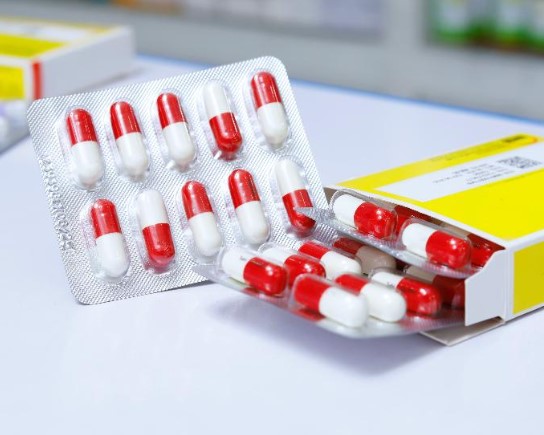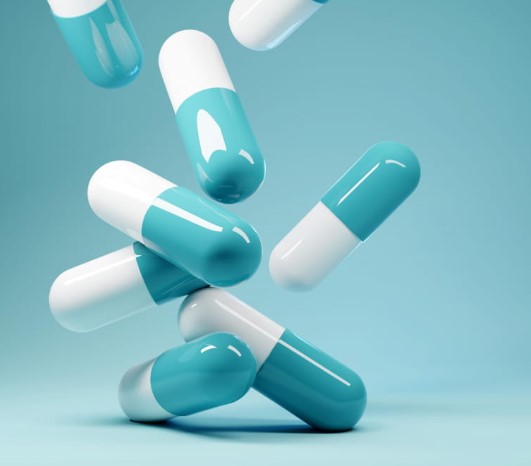Antibiotics in Milk: Safety, Risks and Control

Photo is illustrative in nature. From open sources.
Milk , a rich source of protein and calcium, has long been considered an essential part of a healthy diet. However, in the modern world, discussions about the quality of milk and its possible antibiotic content have attracted public attention. In this article we will look atthe issue of the use of antibiotics in livestock, their possible presence in milk, as well as control and safety measures.
1. Use of antibiotics in veterinary medicine:
One of the main sources of antibiotics in milk is their widespread use in veterinary medicine. Antibiotics are used to treat and prevent diseases in livestock, providing themhealth and preventing the spread of infections in the herd.
2. Risk of developing antimicrobial resistance:
However, along with the benefits, there is also a risk of developing antimicrobial resistance. Constant and widespread use of antibiotics can lead to the evolution of bacteria that become resistant to the action of these drugs. This poses a serious threat to public health.
3. Standards and control:
To curb the risks associated with the use of antibiotics in livestock, many countries have established strict regulations and controls. Manufacturers are required to comply with these standards andmilk is regularly tested for antibiotics before being released onto the market.
4. Transparency and consumer education:
In response to growing consumer interest in the origin and quality of products, manufacturers are becoming more transparent about production methods. Educating consumers about how the control system works and what measures are taken to prevent the presence of antibiotics in milk is becoming an important component of producers' strategy.
5. Prospects for antimicrobial replacement:
With growing concerns about antimicrobial resistance, research is focused on developing alternative methods of prevention and treatment in animals. Promoting probiotics, vaccinations and other innovative technologies can reduce antibiotic dependency.
6. Impact of processing processes:
Milk processing processes such as pasteurization play a role in reducing the risks associated with antibiotics. The high temperatures used during pasteurization can destroy someantibiotics , which ultimately reduces their concentration in the finished product.
7. Ethical practices in animal husbandry:
Producers, aware of consumer concerns, are increasingly embracing ethical animal farming practices. This includes treating animals more gently and seeking more natural living conditions.
8. Ensuring consumer safety:
Food safety is a priority for all parties in the food chain. Producers, regulators and consumers work together to ensure that milk and dairy productsproducts meet the highest safety standards.
9. A balanced view of the problem:
It is important to maintain a balanced view of the problem. Antibiotics can save animal lives and prevent the spread of disease, which is also important for food safety.
10. Promotion of research and innovation:
Supporting agricultural research and innovation will enable us to discover new treatments and prevention options, while reducing dependence on antibiotics and ensuring high-quality milk production.
Conclusion:
The issue of antibiotic use in milk requires careful consideration and multifaceted solutions. Regulatory compliance, transparency, education and a commitment to innovation are key components to maintaining the safety and quality of dairy products in this day and age.
Read together with it:
- Reward for ForgivenessBy 2000, my parents left me without a roof over my head, saying: “It’s okay, you’ll earn money yourself.” Where can a doctor in our country earn an apartment?I wandered around strange corners for 10 years, rented rooms with hostesses, and earned money. I was able to save a little and was looking for...
- Nobody wants to talk to meI am from Moscow. I don't understand why people don't want to communicate with me. I study at an institution where all (okay, not all, but many) students have similar interests.No, I'm not being ignored. I communicate with some people who are happy to see me. But they don't consider me friends. They...
- Love on the edge of possibilityI have been living with a man for 15 years, we have two children together, we have never had any special feelings for each other, we have never promised or sworn anything to each other. But we live and live. We each realize ourselves in work and deeds. We love our children madly (both separately).I'...
- What's wrong with my girlfriend?Me and my girlfriendThe relationship is difficult, we quarrel often. Lately I’ve started texting with different guys, despite the fact that I forbid it. She says she does it out of spite for me, supposedly then I become angry in bed, but she likes it that way.We've reached the point of intimacy, she...
- My mother-in-law regrets that she divorced usFor 20 years now I have been tormented by onequestion . My ex-husband and I have been divorced for 18 years. I raised my son alone. My parents-in-law did not accept me, they thought that I came from a family with money and that my relatives would help. This sounds crazy, I understand that it is diff...
- Husband's unceremonious brotherI already wrote my story about my brother herehusband who constantly comes to visit. At that time, I made it clear to my husband’s brother that I considered his visits too frequent and his behavior unacceptable. Then I talked to my husband, gently. He reacted calmly.3 weeks passed in peace and quiet...
- We overcame the relationship crisis, but it didn’t save the familyMy wife and I have been married for 6 years. It all started very well, a fairy tale, like everyone else’s at the very beginning. But it ended very badly. Now it's worthdivorce questionthe wife stands for preserving the family, although she herself said that she is sothe family is not needed and she ...
- Should I take revenge on my wife's lover?I will share my story and the question that gnaws at me.My wife and I have been together for 9 years, married for 6 years, and have two children - 2 and 5 years old. And then came the moment that I feared most in my life - she cheated on me. This was not a one-time lust, it was a deliberate decision...
- She changed her attitude towards the guy, but did not stop loving himWhen I got a new job, I didn’t think something interesting could happen.acquaintance . In my team there were onlygirls . I sometimes felt like an ugly girl among them.A client came to us, working on the floor below (we worked in the business center). As soon as I saw him, my curiosity arose. I don't...
- I love my wife and son, but I'm thinking about divorceI am 34 years old. Recently I accidentally learned some terrible news. I am deeply offended. It’s hard to explain, but it has left me so unsettled that I’m thinking about divorce.My wife and I have never had any disagreements, although I am calm and she has a cool character. But she never argues, ne...

